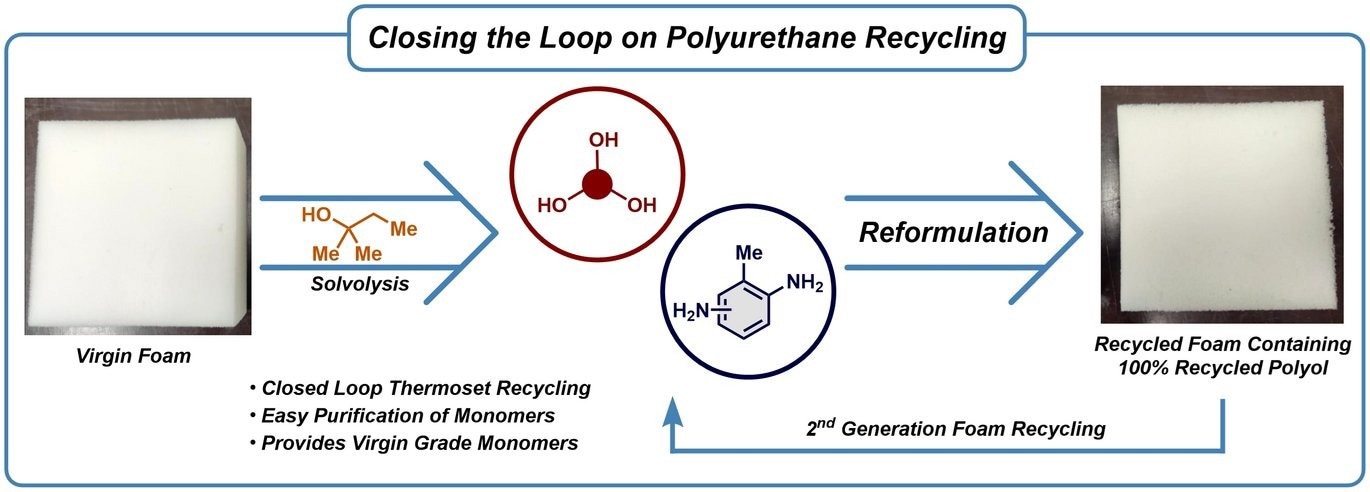Investigators from Aarhus University have now demonstrated, in collaboration with partners from the industry, that straightforward chemistry can do more from polyurethane foam than just extract vital raw materials; the most significant component can also be reused repeatedly in new mattresses.

Image Credit: Aarhus University
When scientists from Aarhus University announced a new and cost-effective method of breaking polyurethane (PU) plastic into its original components, which can then be recycled into new PU material instead of ending up in landfills or incinerators, it caused a bit of a stir back in 2022.
The same scientists have now demonstrated that the method can be used to address flexible foam polyurethane in collaboration with Plixxent A/S, Dan-Foam Aps, and the Danish Technological Institute as part of the Danish RePURpose consortium.
Researchers have broken down approximately one and a half kilos of foam mattresses, retrieved its major components, and used one of them, polyol, as a raw material in a new piece of mattress. The scientists replaced 64% of the mattress without compromising quality by using “fresh” polyol, which is majorly produced from crude oil, with polyol extracted from the old mattress.
Researchers have also illustrated that the method can be repeated many times. In other words, the polyol can be extracted and reused from polyurethane foam.
The findings were recently published in the American Chemical Society’s scientific journal ACS Sustainable Chemistry & Engineering.
Much Needed Solution
This advances us one step closer to a circular economy for flexible PU foam. It is also urgently needed.
Since it is difficult to recycle, the vast majority of global PU waste is disposed of in landfills. Because PU cannot be melted, it cannot be molded into new products like many other plastics.
In 2021, the global PU market was 24.7 million tons, and it is anticipated to reach 29 million tons by 2029. Flexible PU foam used in mattresses accounts for approximately 30% of the market.
The PU family of advanced plastic materials, which has a wide range of properties and uses, is not just used in mattresses. It is also utilized in a wide range of products, including furniture, footwear, toys, paints, fillers, insulation, automobiles, wind turbines, and other aircraft.
Requires Waste Control
Solvolysis is a process that Aarhus University chemists invented and patented that involves placing the material under pressure with hot tert-amyl alcohol and a small amount of caustic potash to dissolve the chemical bonds in PU.
The entire PU market may not be supported by this method, according to the researchers. There are too many variants of PU.
Our technique can push society towards a circular economy for PU mattresses. But if recycling is to put and end to landfilling and incineration, industry and society need full control of waste streams. The problem is that each manufacturer of PU-based materials has its own unique recipe.
Steffan Kvist Kristensen, Study Co-Author and Assistant Professor, Interdisciplinary Nanoscience Center, Aarhus University
Journal Reference:
Johansen, M. B., et al. (2023). Closed-Loop Recycling of Polyols from Thermoset Polyurethanes by tert-Amyl Alcohol-Mediated Depolymerization of Flexible Foams. ACS Sustainable Chemistry & Engineering. doi.org/10.1021/acssuschemeng.3c01469.